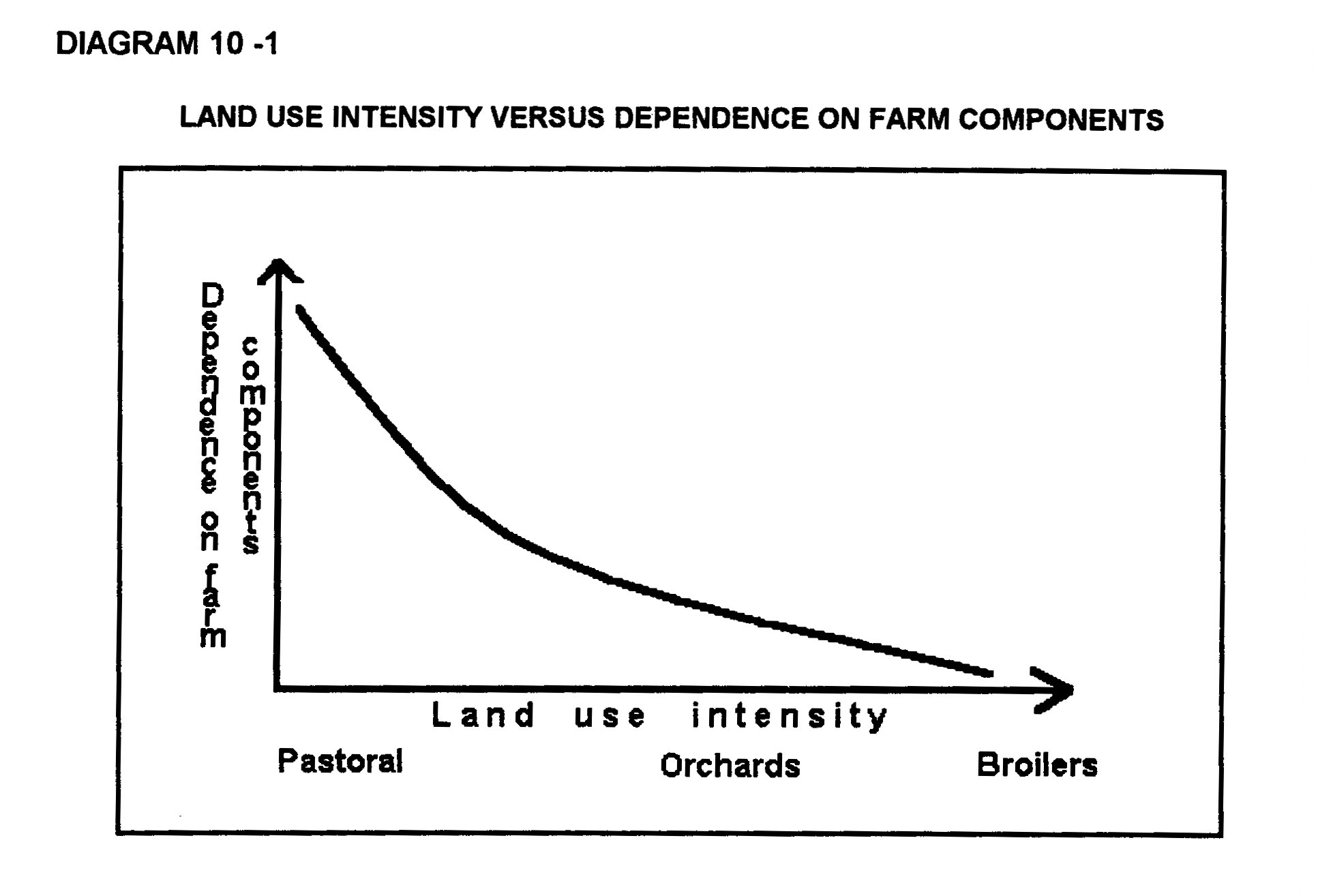RURAL
– INTENSIVE LAND USES 1
david hornby
The
agricultural systems considered so far are known as broadhectare
or dryland farming. However, there are a number of
intensive land uses which have the following characteristics:
- high production
on a small area. that is, a high return per hectare
- specialisation
of land use or mono culture
- higher
management skills and more supervision
- higher risk
- often, a
pioneer or "niche" market
- more capital
intensive per hectare
- typically, uses
irrigation.
The
other important consideration from a farm systems perspective, is
that they are less dependent on the agricultural components of the
farm (eg soil) and more dependent on external environments (eg the
laws on
pollution
control). Therefore, intensive rural land use systems are much more
dependent on outside environments than dryland farming systems and
therefore, are a more "open" system.
THE
PROBLEM OF MANAGEMENT
The
valuer when valuing a rural enterprise assumes normal or typical
management. However, intensive rural pursuits are more likely to be
run by managers with above normal management skills. In this
situation the
valuer
will have to reduce the potential income to that applicable for
normal or typical management as that will be the most likely degree
of management skill enjoyed by an intending purchaser. On the other
hand, if current management is poor, the valuer will have to increase
the expected income to that of normal or typical management.
THE
PROBLEM OF GOODWILL
The
other problem encountered with the purchase of an intensive farm
system is that it may be sold with existing forward contracts or a
list of established clients. This is a business goodwill component
and not part
of
the real estate and therefore, the value of the goodwill should be
deducted from the sale price. For example, when a valuer analyses a
sale on a "walk in walk out" basis he/she must discount
that sale for
any
such element of goodwill.
Company
or personal goodwill can also apply to the property's trading name.
For example, stud properties and nurseries are highly dependent on
the goodwill generated by their name.
See
vegetables
See
fruit
See
grapes
See
irrigation
EXAMPLES
OF INTENSIVE RURAL LAND USES
The
following examples of intensive land uses are covered in this and the
next part in increasing order of
intensity:
- Orchards
- Dairies
- Pigs
- Broilers.
See
orchards
See
pigs
See
broilers
See
dairies
3

